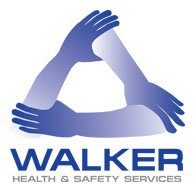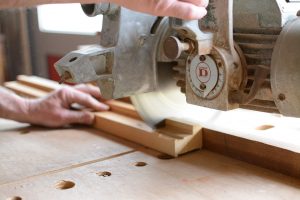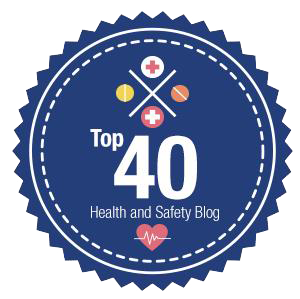The risks from hand/arm vibration can often be easily managed, but it is vital that the correct measures are put into place. Check today that your workers are protected when using power tools and other similar equipment.
- Do a risk assessment to help identify the hazards associated with vibration in relation to the tools your workers use, and the jobs they are required to do. Look at both individuals and groups of workers who may be at risk.
- Work out which of your tools emit vibration and each of the tasks they are used for. See what control measures are needed to either remove or reduce the vibration risk, such as introducing maximum time limits for the use of each tool. Check the manufacturer’s instructions and guidance for information about this.
- Train workers to use hand-held tools in the correct way. Make sure they do not apply excessive force but instead allow the tool to do the work.
- Introduce health surveillance for those potentially at risk of ill-health from vibration. Teach staff about the symptoms to look out for, such as finger numbness, pain and loss of grip.
- Regularly inspect tools to check that they are in a good condition. Make sure that tools are not blunt, and that where feasible, dampeners are in place.
Contact us if you require advice.
The Control of Noise at Work Regulations 2005 require you to prevent or reduce risks to health and safety from exposure to noise at work.
Regulations require the employer to:
- Assess the risks to employees from noise at work
- Take action to reduce the noise exposure that produces those risks
- Provide employees with hearing protection if the noise cannot be reduced
- Make sure the legal limits on noise exposure are not exceeded
- Provide employees with information, instruction and training
- Carry out health surveillance where there is a risk to health.
How to protect workers
Firstly, find out if there is a noise problem.
- Is the noise intrusive for most of the working day?
- Do employees have to raise their voices to carry out a normal conversation when about 2m apart for at least part of the day?
- Do employees use noisy power tools or machinery for more than half an hour each day?
Then, assess and control the risks:
- Measure the noise levels
- Put in a programme of noise reduction if needed
- Maintain plant and machinery
- Look for quieter processes.
Provide information, instruction and training. Tell workers:
- The likely noise exposure
- What is happening to control risks and exposures
- Where and how people can obtain hearing protection
- How to report defects in hearing protection and noise-control equipment
- What their duties are under the Noise Regulations 2005
- What they should do to minimise the risk, such as the proper way to use hearing protection.
Implement health surveillance:
- Provide regular hearing checks in controlled conditions
- Tell employees about the results of their hearing checks
- Keep health records
- Ensure employees are examined by a doctor where hearing damage is identified.
Ignoring a noise problem in the workplace can cause misery to employees who may suffer deafness and tinnitus. This can be prevented and at the same time, save money and court appearances by assessing noise now.
Don’t wait for a claim.
Contact Walker Health and Safety to discuss a noise assessment.
Hand and arm injuries caused by machinery parts are far too common, even in this day and age. Take the time today to check all of your machines for hazards, and ensure that any moving parts are properly guarded.
- Do a risk assessment to identify the hazards presented by each of the machines on site. See where a worker could get their hand pulled in by a rotating blade or roller, where a sharp blade could cut them, or where a machinery part could crush them, for example.
- Prevent access to these parts where possible, for example by enclosing the machine. Paint lines around machines to show workers the safe areas in which they should stand. Provide emergency stop buttons in suitable places and ensure they are visible and working correctly. Use interlocks where feasible on machine doors to stop the process should the doors be opened during the machine cycle.
- Use suitable guarding on areas that are hard to fully enclose. Use fixed, durable guards that cannot be easily removed.
- Train workers on the hazards identified and on how to use control measures such as guarding. Make sure they know not to remove any guarding without permission, and that the machine must be isolated from the power source first.
- Prepare in advance for maintenance and cleaning activities. Plan how workers should undertake these roles, and how guarding or other controls are to be safely removed. Use a checklist to verify that all controls are back in place and working correctly before the machine is put back into use.
Contact us if you require assistance.
Fork lift trucks (FLTs) are flexible, useful pieces of work equipment that help with the lifting and transportation of goods, but they are often misused and people try to cut corners with them – either by speeding, overloading them or allowing them to be operated when damaged.
10 Top Tips for the Safe Use of Fork Lift Trucks
- Keep FLTs and pedestrians separate, by having clearly defined segregated routes for both. Always choose a physical barrier over just a marked walkway where possible, and ensure these are regularly checked for damage and wear and tear.
- Ensure that all FLT activities are fully risk assessed, and implement control measures to reduce the risk of people being harmed.
- Give workers a way of reporting bad habits and practices in a blame-free environment, perhaps via health and safety representatives if they are worried.
- Implement speed limits and limit reversing where possible.
- Always ensure there is good lighting and visibility. Remove blind corners and keep flooring in a good condition and free from obstacles.
- Make sure all the safety features on the FLT are used and are working – this includes reversing lights and alarms, mirrors, and seatbelts. Introduce pre-use checks – it’s a good idea to have a written checklist for users to complete. Any defects should be reported and the equipment taken out of use until rectified.
- Ensure operators have the necessary training for the type of FLT they will be using, which also includes the types of activities undertaken. Organise refresher training at suitable intervals for all operatives.
- Remove the keys when not in use to prevent un-authorised access.
- Ensure that FLTs owned or operated by you are under a scheme of thorough examination by a competent person – often this is done by the insurance company.
- Do make sure you know what the maximum weight limits are for each FLT you use, in conjunction with the height and load centre.
Contact us if you require information.










